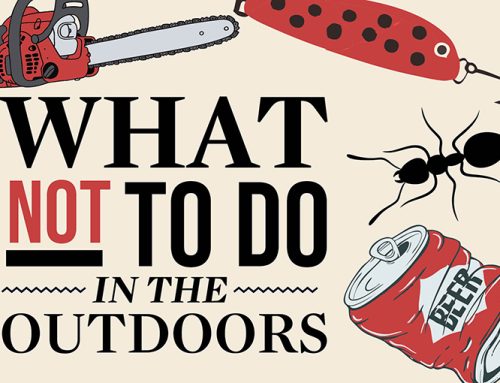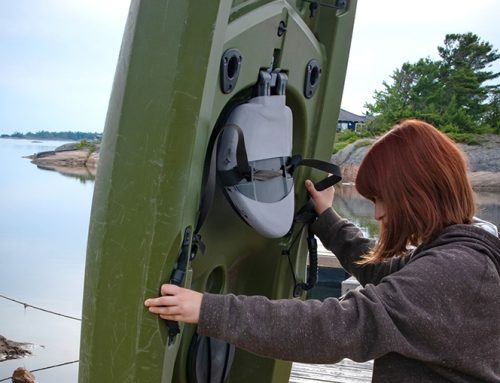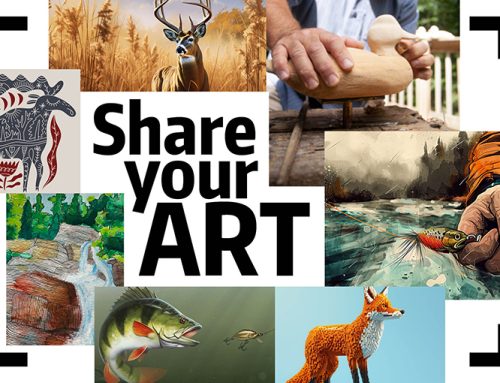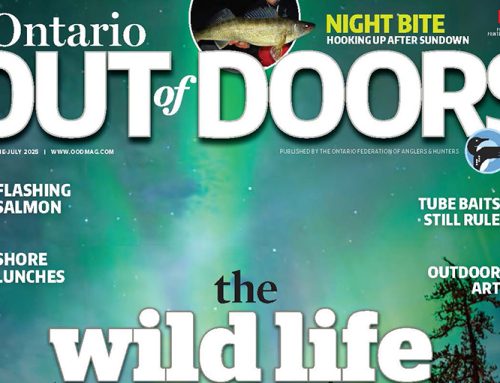
I was sitting in my stand one mid-October evening, trying to decide whether I should arrow a reckless young buck that was feeding less than 20 yards away.
It was not an easy decision to make. You see, the season was still young, and trail camera photos had shown me there were a few better bucks in the area. But I also knew that one well-placed arrow would free me up to pursue the cherished upland hunting and waterfowling opportunities that autumn brings.
I had almost convinced myself to introduce the young buck to my freezer, when he and the two accompanying does raised their heads, cupped their ears forward, and gazed off to the left. They couldn’t have communicated what was about to occur more clearly had they yelled it in English — another deer was approaching.
Seconds later, the sound of hooves dragging through brittle leaves grew louder. And, as I readied myself for a shot, a big, mature nine-point buck sauntered into my line of sight, parting the other deer like sparse hair on a bad comb-over. When he paused, my arrow passed through his chest cavity. Some 30 minutes later, while I alternated between catching my breath and dragging him up a steep hill, I reminded myself to choose the smaller deer next time. This is the kind of situation you get yourself into when you pay attention to the body language of deer.
A picture paints a thousand words
Most hunters are well aware of deer vocalizations. We know what the various grunts, snorts, wheezes, and bleats mean. We use some of these sounds to call deer in. What we often fail to place importance on, however, are the more subtle postures and movements that telegraph a deer’s intentions.
I would argue that these are perhaps more important to the hunter since they can often be seen far beyond the range of our hearing and also because deer broadcast their body language with every movement. They also vocalize infrequently.
A deer’s body language presents one of those “A picture paints a thousand words” scenarios. Interpret it correctly and you can determine if the deer is relaxed, agitated, fearful, ready to bolt, healthy, sick, injured, aware of your presence, about to be joined by other deer, or pursued by predators. This can inform your next move. And an informed next move often leads to the notching of a deer tag.
Relaxed
While I’m not sure a deer is ever fully relaxed, there are signs that indicate that they are not feeling nervous, alarmed, or threatened at the moment. These are the signs we all hope to see when a deer is in our vicinity or approaching.
Basically, a relaxed deer moves at a steady but calm pace, raising and lowering its head, in rhythm with the terrain and its gait. Its tail will be down but not noticeably tight to its body, or it will be twitching from side to side. It might pause to feed, casually tend to biting insects, or groom itself while meandering slowly through the woods. Or it may be walking in a purposeful but relaxed manner to a destination such as an apple tree, bait pile, or bedding area. If a deer starts eating at a bait pile or a food plot, it’s almost certainly in a relaxed state. Even in a relaxed state, however, deer raise their heads to take in scent, listen, and survey their immediate area. That’s just how they are hard-wired.
But when they get suspicious of their surroundings, they’ll also add one or more of the following to their repertoire.
Freeze
Almost every deer hunter has seen this. A deer is walking or feeding, appearing to be in a relaxed state, when it suddenly raises its head, tenses up, and freezes. A deer in this posture has scented, heard, or seen something suspicious. So, it will remain completely still until it identifies the cause and threat level. Or until the cause for concern passes. It might stand still for quite a while and then, when it feels it is safe to proceed, will continue as if nothing happened. Conversely, it just might slip off quietly or even bound away, if its senses tell it that the area contains a threat.
If you have a rifle or shotgun, you might consider taking the shot, since it is standing still. Conversely, if you are using archery equipment and the deer is looking right at you, it’s best to wait until it relaxes again and focuses elsewhere. That way, you won’t risk a bad hit as a result of the animal trying to duck an incoming arrow.
Keep in mind that the deer might not be entering this posture (and any of the ones that follow) because of you. Other animals, approaching humans, or distant noises might also be the cause.
It’s also good to know that a deer often freezes before stepping out into the open or to a vulnerable place. I have frequently seen deer approach almost to the edge of the woods beside a field and then freeze for what seems to be forever, only to come out at last light or when they are certain it is safe. It is good to carefully observe places like these when still hunting.
Testing the air
Deer test the air all the time by raising their noses and scenting. If you see a nearby deer do this downwind of you, or do it while circling downwind of you, you are about to find out if your cover scents work or if your tree stand is high enough to carry your scent over its head. Quickly decide if you can make a clean, ethical shot, because if a deer gets your scent, the opportunity will soon be lost.
The hoof stamp
The last thing any hunter wants to see is a deer stamping its front hooves on the ground while standing in place. This is a sure signal that the deer has detected something suspicious and is warning other deer in the vicinity — and if that deer is looking in your direction, that “something suspicious” is probably you. The stamping deer has either scented you, heard you or saw you move, or it just might have noticed that something is out of place in your set-up.
If you are unprepared for the shot stay still and pray the wind and your scent control efforts work in your favour. Sometimes after foot stamping, deer begin to relax again if you or the wind provide no further cause for alarm. Most often, however, that startling action is followed by a snort (which sounds like a loud sneeze). That is often followed by the sound of every deer in the area bounding off. So, if you have a high-probability, ethical shot, you might consider taking it before that happens.
The head fake
Deer will often resort to the head fake when they are at a feeding site and suspect something is out of place. A deer doing this will lower its head to feed, but then raise it quickly and unexpectedly to look at what is causing suspicion. They will do this several times in an effort to catch a glimpse of the perceived threat moving. To make matters worse, often more than one deer at a feeding location will do this to you — in which case, consider yourself pinned down.
When they are doing this, they are coiled and ready to bound off at the slightest provocation. If they detect minor movement, noise, or scent, they might break into some foot stamping to warn other deer. If they detect blatant movement, noise, or scent, they will often bound off immediately.
Often, if you haven’t alarmed the deer too badly, it will eventually relax. This can take a while and the first indications are that the deer is focusing back to the eating part. After things have returned to normal, then you should move excruciatingly slowly and quietly to take the shot if that’s the plan.
Ears
A deer’s ears can tell you a lot of things. Mostly, they give you an indication that the deer is hearing something you probably are not. And, as the experience I relayed at the beginning of this article indicates, that can provide you with early warning that another deer is coming along. Or, alternately, that a predator is approaching that will move the deer along.
This bit of body language is especially handy when you are watching relaxed deer that are within range or bedded down. Once you notice that their ears perk up, follow the direction of their gazes and you might see the approaching animal that is causing all the fuss. And it just might be the deer you were waiting for. Also, never forget, one of the best times to take a shot is when a deer is focusing on an incoming animal.
During the rut, a buck’s ears, when laid low, can also signal that another unseen buck is approaching. This is often accompanied by a lowering and pointing of its antlers towards the interloper.
Tails
Most people know that a deer’s tail raised high means they are on high alert and ready to bolt if they are not doing so already. The theory suggests a raised tail warns other deer in the group of danger and keeps groups of animals together during their escape.
Sometimes, however, deer that are alarmed at close range will run with their tail held tight to cover up the white hair on their rump. The same goes for deer that spot danger a long way off. It is theorized that they do this so they can sneak off undetected. Some people attribute this to the deer being a loner with no one to signal to. Regardless of why, consider that a reminder that just because you are not seeing flags in the cover you are pushing, doesn’t mean you are not moving deer.
There is one tail display that hunters should be happy to see. That is when a deer flicks its tail casually, from side to side. A deer does this when it believes danger has passed.
Hunt discipline
Understanding what a deer’s body language is telling you is important to the hunter. For that is the kind of information that will keep you from making blunders that will haunt you to the end of the season and beyond.
No matter what a deer’s body language indicates, a hunter should always treat every deer as if it is in high-alert mode. After all, there’s no better way to convert a relaxed deer to a highly suspicious one than being sloppy with your movements, noise discipline, use of wind, and scent control. Besides, even if you are dealing with a totally oblivious deer, there could just as easily be one you haven’t yet seen trying to figure you out.
Yet, if you remain calm, have a sound plan in place, and respect their incredible powers of detection, you’ll increase your odds of success significantly. And then the only body language you’ll need is the high-five.
Originally published in the 2022-2023 Hunting Annual issue of Ontario OUT of DOORS






Leave A Comment